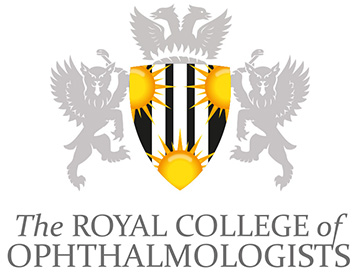Use of Avastin (bevacizumab) in age related macular degeneration
15 December 2014
Updated Statement from The Royal College of Ophthalmologists
In 2011 a working group of The Royal College of Ophthalmologists released a statement regarding the use of Avastin (bevacizumab) in medical ophthalmology. It found that Avastin and Lucentis (ranibizumab) were equally effective in the treatment of neovascular age-related macular degeneration (AMD) and that there was no convincing evidence of a clinically significant difference in the incidence of serious adverse events between the two.
The working group, recognising that Lucentis was both licensed and The National Institute for Health and Care Excellence (NICE) approved, recommended that it should be the default treatment for neovascular AMD, pending a National Health Service Executive (NHSE) commissioned review of Avastin by NICE and the Medicines and Healthcare Products Regulatory Agency (MHRA). The group also supported the use of Avastin if an ophthalmologist felt it was in a patient’s best interest, including conditions for which Lucentis was not licensed.
At that time, the College issued an accompanying press release in which it pointed out that the use of Avastin instead of Lucentis would save the NHS considerable sums of money. However, General Medical Council (GMC) guidance stated that an unlicensed ‘off-label’ treatment should only be used if doing so would better serve a patient’s needs than using an appropriately licensed alternative, thus preventing the routine use of the cheaper therapy for neovascular AMD.
Since 2011, the IVAN trial (2012) has provided further evidence that Avastin is as effective as Lucentis in the treatment of neovascular AMD, and a Cochrane review (2014) comparing the safety of these drugs when used to treat neovascular AMD did not find evidence of a difference for deaths, all serious systemic adverse events (SSAEs), or specific subsets of SSAEs in the first one to two years of treatment with the exception of gastrointestinal disorders.. The Cochrane review concluded that, with regard to available data on systemic safety, there was no significant clinical or research evidence to support the preferential use of either Avastin or Lucentis in the treatment of neovascular AMD.
A recent economic evaluation of the data provided by the IVAN trial found that switching from Lucentis to Avastin for neovascular AMD could save NHS England alone at least £102 million per year. The College recognises that this would represent a significant saving in a time of health budget constraints, and, in view of the evidence that is now available would be supportive of both drugs being made available in the UK.. However, the constraints placed on clinicians in 2011 are still in place today.
The current situation is divesting the NHS of funds that could be put to better use. In an age where evidence based medicine should prevail this is disappointing. Ophthalmologists should be in a position to treat patients according to sound scientific and clinical evidence that includes information about the overall costs to the health service. This is in keeping with guidance on Good Medical Practice, issued by the GMC in 2013, which states that clinicians must provide effective treatments based on the best available evidence, and that they must make good use of the resources available to them. Current evidence indicates that using Avastin instead of Lucentis is in line with this guidance. Furthermore it is also in keeping with NICE’s remit to ensure NHS treatments are cost effective.
There is clear evidence that, despite the lack of a licence, Avastin is a safe and effective drug for the treatment of neovascular AMD. The College would therefore welcome an urgent review of this issue by the United Kingdom Health Regulatory Bodies to consider how this unusual situation can be remedied.
